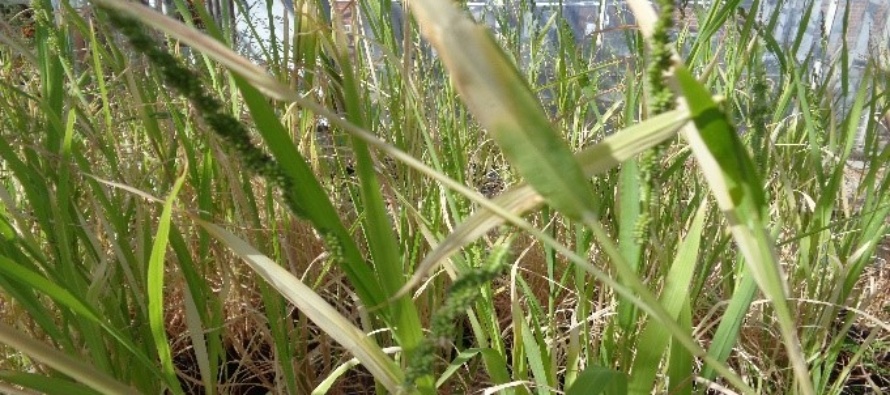Barnyardgrass

Related Articles
- Calcium and Magnesium For Mississippi Crops 0
- March 11 Precision Agriculture Workshop 0
- Ground Speed Affects Spray Droplet Deposition 0
Latest Tweets
Barnyardgrass
Weed Flora of Mississippi
Prepared by
Taghi Bararpour and Jason Bond
Family: Poaceae (Grass family)
Genus: Echinochloa Species: crus-galli
History: Barnyardgrass (billion-dollar grass, watergrass, panic-grass, summer grass), originally from Europe and India, now ranges from latitude 50 N to 40 S, in both temperate and tropical habitats. It is a serious weed problem in 42 countries . It is the world’s principal weed of rice and likely has been for a long time. Barnyardgrass is recognizable in Chinese drawings from 1590. No one apparently documented the migration of barnyardgrass into the United States; therefore, this may indicate that there was no interest in the plant as a weed or as possible forage until later.
Life Cycle: Summer annual
Special Characteristics: The success of barnyardgrass is attributed to prolific seed production, seed dormancy, ability to grow rapidly and flower in a range of photoperiods, and resistance to multiple herbicide modes of action. The species is one of the few grass weeds in which ligules are absent. A healthy full-season barnyardgrass plant in California’s Central Valley can produce 750,000 to 1,000,000 seeds, and as many as 2.25 x 106 seeds under optimal conditions. Barnyardgrass is primarily self-pollinated.
Roots: Fibrous.
Ligule: Absent.
Auricles: Absent.
Stems: Usually erect, thick, without hairs (glabrous), often branched at the lower nodes.
Leaves: Rolled in the shoot, smooth, and the leaf sheaths are often maroon at the base.
Flower: Seedhead a terminal panicle. Panicles may be green to purple in color and are comprised of individual spikelets that may develop a 2- to 10-mm long terminal awn.
Seeds / Fruit: The seeds are nearly oval, shiny, and yellowish gray to brown.
Seedling: Seeds are without hairs (glabrous).
Interference: Barnyardgrass competition with dry-seeded rice reduced grain yields from 8 to 79% when competition began at crop emergence and lasted for periods ranging from 15 days to maturity.





Let me tell You a sad story ! There are no comments yet, but You can be first one to comment this article.
Write a comment